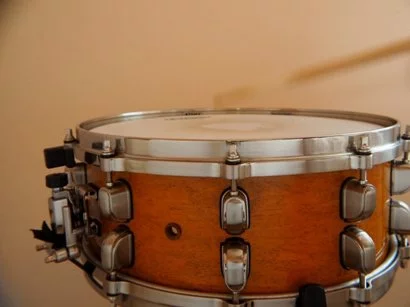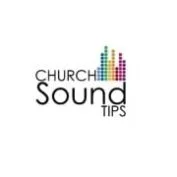Drums are an integral part of many musical genres, and have been for centuries. They provide the rhythm and sound that drive songs forward, generating excitement in listeners. But how loud is a drum? This question has been asked by music lovers ever since drums were invented. If loud drums are considered a problem or you get noise complaints(e.g. in a church building), there are practical solutions to this, such as using a drum cage for church as soundproofing to reduce the volume level. In this blog post we’ll answer this question and more with the help of some interesting facts about drums!
Noise levels
The human ear is incredibly versatile and can detect sounds across a vast range of frequencies. We are able to pick up on the tiniest noise, but we also need to be careful not to listen too closely as this could damage our hearing!
We hear sound because molecules vibrate around us – these vibrations travel through air until they reach our ear drums where they are detected by tiny cells. These cells send signals to the brain which interprets them as sound!
The human ear is fantastic, but it isn’t perfect – especially when exposed to too much loud noise for a long period of time! Loud noise can damage our ears in two ways:
Tinnitus- this causes a ringing sound in the ear that is constant and loud – it can lead to issues with concentration, mood swings and sleep!
Noise-induced hearing loss- this occurs when our ears are exposed to very loud noises for long periods of time. These sounds cause damage to tiny hair cells inside the cochlea which eventually leads them dying off. Once these cells are gone they can’t be regenerated and this means that we lose some our hearing ability!
When it comes to loud drums, every instrument has a volume threshold where the sound becomes harmful for human ears
Sound Intensity
Sound intensity is generally measured in decibels, so when comparing the strength of sound waves from different parts of a drum set, I will use this measurement which is
Bass
A typical modern bass drum operates at around 80-120 dB. This sound level can depend on whether or not a batter head is used, as well as how hard it’s struck – you might notice that the loudness of a drum is increased when it’s struck harder.
The most common type of bass drum used in modern music features two heads which are tensioned with bolts on either side, and one head that has its own counter-hoop – this is called a ‘double-headed’ bass drum.
Snare
An average snare drum will measure about 114 decibels. This is loud enough to cause damage if exposure lasts long enough, so it’s important to use ear protection when practicing! For reference, the level of noise on a busy road or subway platform can be around 80dB – this means that playing your drums regularly could cause similar levels of hearing damage.

Tom-toms
Tom-toms are a type of drum that can be played while sitting or standing. These instruments usually have two heads, one for each hand to play on, and depending on the size will produce different sounds. In terms of decibels, tom-toms range from 82-104 dB.
Cymbals
Cymbals can reach decibel levels as high as 150 dB. This is due to the fact that they are struck with two sticks and not one, generating more sound than a single-stick strike would. A cymbal has no definite pitch or note but instead produces an extended range of frequencies – this makes it difficult for listeners to gauge how loud cymbals are.
Cowbell
A cowbell measures at about 100dB, making it around as loud as a tom-tom. They’re not usually used in music on their own but instead form part of the percussion section of an entire acoustic drum set – they can be struck against another cymbal to produce a ringing sound or hit with a stick for sharp ‘dings’.
| Bass | 80-120dB |
| Snare | 114dB |
| Toms | 82-104dB |
| Cymbals | 150dB |
| Cowbell | 100dB |
| Bongos | 96dB |
| Timpani | 105dB |
| Orchestral | 96dB |
| Marching drums | 115dB |
| Cajon | 108dB |
| Djembe | 100dB |
| Conga | 110dB |
| Tambourine | 100dB |
| Bodhran | 89dB |
| Electronic drums | 90dB |
How loud are Acoustic Kits?
Drum Kit components combined can reach sound intensity levels as high as 110 dB – this is the equivalent to a passing motorcycle or an operating lawnmower. You should always wear ear protection when playing drums, even if you’re just practicing at home! The noise produced by an acoustic drum kit is very close to being comparable with a chainsaw or rock concert, so it’s essential to protect your ears.

Comparisons with other instruments
A drum kit is not the loudest instrument – this award goes to bagpipes, which can reach sound levels of up to 127dB. However, drums are still capable of reaching decibel levels that cause hearing loss after long periods of playing or exposure if no ear protection is worn – it’s important to wear a pair when practicing! The loudest components of a drum set include the bass and snare drums, as well as cymbals.
Loudness Level for Different Types of Drums
Bongos
A bongo drum measures around 96 dB. This is not as loud as other drums, but can still cause hearing damage if exposed to the sound for long enough. Like most percussion instruments it produces a range of frequencies that vary in pitch and tone, making them hard to compare with how loud something else might be!
Timpani
A timpani drum measures at around 105 dB. This is very close to the sound level produced by a snare, making it one of the loudest drums in modern music! They are large instruments with skins stretched tightly across them, which can often mean that they produce lower frequencies than other types – this means that they don’t stand out as much in the mix of a song.

Orchestral drums?
Orchestral drums usually measure at around 96 dB, which is on par with bongos and timpanis. These large instruments produce low frequencies that add depth to the music they’re used in – this makes them ideal for classical styles which rely on cutting through a larger mix.
Marching drums?
Marching drums measure at around 115 dB, putting them among the most powerful of all drum kits – those used in military music can be even louder! These large instruments have thick skins and produce low frequencies that carry well over long distances as they play. They are also often very deep in pitch, which can make them difficult to compare with other drums.
Cajon
A cajon drum measures at a volume of 108 dB. This is on par with timpani and bongos, but louder than an orchestra or marching kit! These drums have two heads that are often played with either hands or brushes – they produce very little sound by themselves so you need to strike them hard to hear anything. Read more about how to mic a cajon.
Djembe
A djembe drum measures around 100 dB. This is on par with timpani and bongos, but louder than an orchestra or marching kit! These drums are very popular across the world as they produce a crisp tone that can be heard over long distances – this makes them perfect for outdoor music events where it’s important to hear the music. Find out how to mic a djembe.
Conga
Conga drum volume levels will vary depending on the type and size of conga that is being used! The smallest drums measure at around 110 dB, which makes them slightly louder than timpani and bongos but quieter than a marching kit or orchestra set. Larger drums can be as loud as 115 dB – this puts them among the loudest drums in modern music.

Tambourine
A tambourine measures at around 100 dB, making it about as loud as a bongo! These small instruments have metal discs that produce bright tones when shaken – they can be very hard to hear on their own so you need to shake them with force to add some punch.
Bodhran
A bodhran drum measures at around 89 dB, which makes it quieter than a timpani or bongo – this is on par with an orchestra. Bodhrans are small and shallow drums that produce low frequencies to add depth to the mix! They come in a range of shapes and sizes but they all share the same basic design, which means that they all produce a similar tone and volume.
Electronic drum kits
Electronic drums are far less loud than acoustic drums – in fact, they produce sound levels around 90 dB which is about the same as a hi-hat! Electronic drums have speakers built into them that amplify their sounds and make it possible to hear even quiet notes. It’s important not to turn up your volume too high when playing an electronic drum kit as this will damage your ears – it’s best to use a common sense approach and play at a sensible level that doesn’t cause any discomfort. You can also play electronic drums with headphones for practicing or if you want to avoid disturbing the neighbours. Sometimes when there are complaints that church music is too loud, this can be a good option.
What sound levels are considered dangerous?
A level of 85 dB or above is considered harmful to the ears. Anywhere between 90-100 dB can cause damage and hearing loss after just 15 minutes exposure! Most drums produce sound levels that are well within this range, but some will be louder than others – especially marching and military types which have large skins stretched tightly across them.
Conclusions
Drums can be some of the loudest instruments in modern music, especially if they are being played with a lot of force! For players who have their drums tuned to sound at low volumes it’s important that you take care not to over-play – this means using just enough force for each hit so that your drum sounds how you want it to.
If you’re not sure how hard to hit your drum just ask a friend for feedback! The best way to get the perfect volume is by playing quietly – this means lightening up on your force so that each note rings out clearly and doesn’t sound over-driven or unclear. It is also advisable to wear some kind of hearing protection to prevent hearing loss.

Leave a Reply